Your Cart is Empty
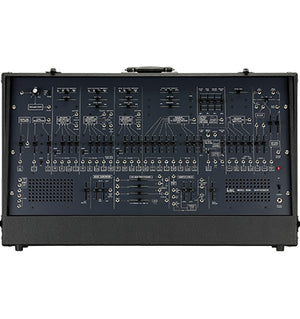
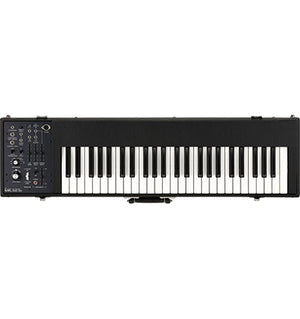
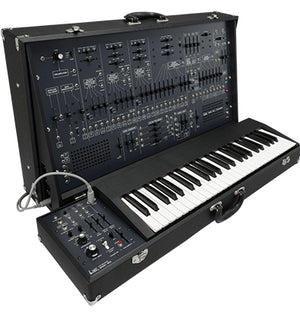
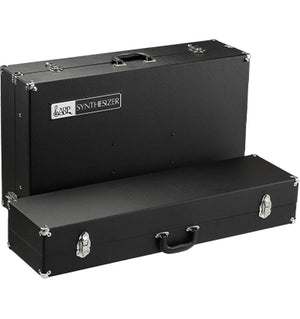
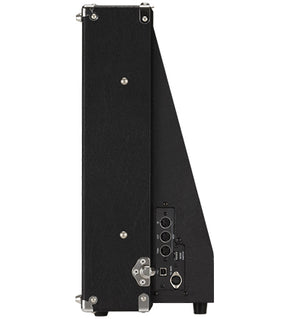
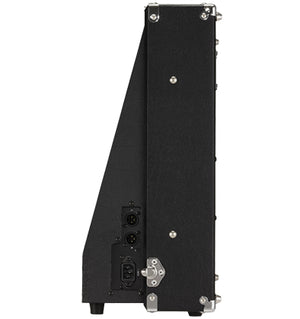
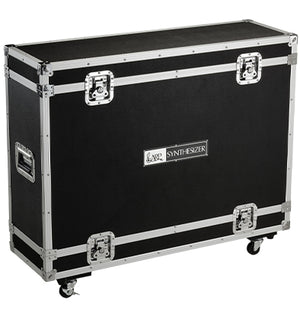
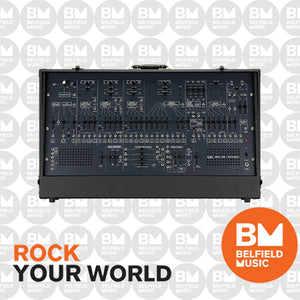
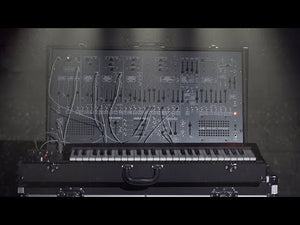
Product Information
Once, and for All
The ARP 2600 is brought back to life in a single, one-time-only production run. Now is your opportunity to own one of the most sought after and coveted instruments from the vintage synthesizer era. This limited-edition release is a loving reproduction of the 2600, handcrafted in Japan and includes USB and DIN-style MIDI connections, XLR audio outputs, plus the improved ARP 3620 Duophonic Keyboard with an added arpeggiator / sequencer. Your new ARP 2600 will arrive in a custom-branded hard shell case, complete with casters.
The Total Package
More than a synthesizer, the ARP 2600 is a complete sound design studio. Even today, the ARP 2600 stands as a bridge between the individual elements of modular synthesis and the immediacy of a production / performance instrument. Included are an ample supply of oscillators, envelopes, a filter and amplifier – all of the building blocks of analog synthesis. But the ARP 2600 goes even further, with a spring reverb tank and even a pair of built in monitor speakers. Also present is much of the versatility of a vintage modular system, including a ring modulation, lag and voltage processors, an envelope follower, audio preamp, a clock-able switch, noise source, a sample & hold module, signal inverters, an auxiliary mixer, and even a set of parallel-wired/multi jacks.
Normalled Pathways
Nearly every slider and switch on the ARP 2600 front panels is hard wired to specific control source. For example, the front panel controls allow the pitch of Oscillator 1 to be controlled by the keyboard (On/Off switch), the output of the Sample & Hold module (slider), the shape of the ADSR envelope generator (slider), and/or by the sine wave output of Oscillator 2 (slider), and each in varying amounts. These hardwired pathways provide massive amounts of immediate control that make excellent use of all the ARP 2600 has to offer, allowing the ARP 2600 to be played as is – no patching needed. In true modular fashion, inserting a patch cord into the jack associated with any hardwired control overrides that internal connection, letting you create a new signal path of your choosing. As a programming aid, the detailed panel graphics clearly show the available signal routings.
Patch Bay Precision
Unlike earlier modular synthesizers that relied on bulky 6.3mm (1/4") jacks and patch cords, the ARP 2600 uses a more streamlined 3.5mm (1/8”) jack that allows for more patch points to occupy the same amount of panel space, delivering more options and more versatility. Most of the patch points are arranged in a single row below the controls of the individual sound modules. This arrangement keeps the main panel clear and unobstructed for tweaking the controls during performance. Needless to say, these patchable connections and the onboard processors can be used to interact with nearly any modular or Eurorack synthesizer system.
3620 Keyboard
While faithful to the original design, the functionality of the 3620 Keyboard has been greatly enhanced for this limited ARP 2600 release. The 3620 Keyboard contains 49 full-size keys, aftertouch, portamento, and is also duophonic, allowing two keys to be played at once – Single or Multiple Triggering is available. In addition, the duophonic keyboard can use an optional foot switch to lock the interval between any two notes, without retuning the oscillators during performance. Vibrato can be added via a dedicated circuit controlled by aftertouch, or by the onboard LFO (Low Frequency Oscillator), using any of three available waveforms. Most noticeable is the addition of a flexible Arpeggiator that allows a user-defined pattern to be manually sequenced and played back. Still present are the original Pitch Bend knob and the Two Octave Up / Two Octave Down Transpose switch. Connecting the keyboard to the main unit now uses a secure eight-pin din cable.
Processing Powerhouse
The ARP 2600 reveals its modular nature by the unique assortment of valuable, esoteric, and individually patch-able modules it contains. To begin, there are a set of parallel-wired Multiple jacks that enhance the patching possibilities – allowing the same control signal to be sent to multiple locations, for example. Three independent Voltage Processors provide scalable control voltages, or can act to attenuate any control signal. Use the Lag Generator to delay the start of any control signal. The Noise Generator is tunable to deliver White, Pink, and Low-Frequency noise, plus everything in between. A series of three Inverters can reverse the polarity of any signal. The Electronic Switch can be sync’d to either the internal clock or any external clock signal, as can the Sample & Hold rate. Most importantly, the ARP 2600 includes a dedicated Preamp and Envelope Follower for processing an external audio signal.
The Oscillators
ARP Voltage Controlled Oscillators (VCO) are extremely stable in their tuning. All three oscillators feature Initial Tuning and Fine Tuning sliders, and every oscillator can be designated as an LFO (Low Frequency Oscillator) modulating oscillator or as an audio oscillator. (Additional LFO modulation sources are available on the ARP 3620 keyboard; included.) Each oscillator generates multiple wave shapes at once. Available Waves include Sawtooth, Square, Triangle, Sine, and Pulse. The Pulse wave of Oscillator 2 and Oscillator 3 include a manual Pulse Width control, and Pulse Width Modulation is available on Oscillator 2. One audio oscillator can be used to modulate the frequency of another audio oscillator to create analog FM effects.
The Filter
The ARP 2600 is equipped with a 4-pole Voltage Controlled Filter (VCF), offering a roll-off curve of -24dB per Octave. As with the oscillators, the ARP 2600 filter also offers a Fine Tuning slider. The addition of Fine Tuning allows precise and useful control of the pitch of a self-resonating filter. The input mixer stage of the VCF includes sliders for each Oscillator, the Noise Generator, and the output of the Ring Modulator. Over time, the ARP 2600 historically went through a number of changes; some were cosmetic, and some were more crucial to the sound. The Filter Type switch selects between a filter response more closely related to either earlier or later models of the ARP 2600.
The Envelopes
Two Envelope Transient Generators (EG) are available on the ARP 2600. The first is a full four-stage Attack, Decay, Sustain, and Release Envelope. The second EG offers variable Attack and Release only. The Manual Start button allows the Envelopes to be retriggered at any time, without using the keyboard. The Envelope module also provides both Gate and Trigger outputs – ideal for patching into another analog modular or Eurorack system.
The Amplifier
In order to produce and output sound, the ARP 2600 relies on a Voltage Controlled Amplifier (VCA) to bring the output up to a suitable level. The Amplifier features both Linear and Exponential control inputs, and the Initial Gain setting provides continuous output at its highest setting.
Ground Zero of the Synthesizer Age
It would be impossible to overemphasize the importance of the original ARP 2600 analog synthesizer. The ARP 2600 stood alone, retaining all of the versatility of a massive modular system in a modern, portable, and eminently playable synthesizer. Over the next decade, sales of the 2600 continued to amass as ARP became the largest synthesizer company in America – and possibly the world.
The ARP 2600 drew support from all manner of sources. Alan R. Pearlman and David Friend’s unified design made it the ideal choice for academic use, and indeed, for many an early wave of synth enthusiasts, the ARP 2600 was the instrument they learned on. Professional musicians of all genres gravitated to the ARP 2600 for its incredible sounds and the satisfying hands-on panel scheme. Sound artist Ben Burtt used the ARP 2600 to voice the adorable droid R2-D2. Over the ensuing decades, the ARP 2600 has remained one of the most sought after and coveted instruments from the vintage synthesizer era, and has attained the most revered status among players, producers and sound designers.
Modular synthesizers of the day closely resembled today’s Eurorack systems, consisting of a powered cabinet housing a selection of synthesizer modules, which were in turn connected using patch cords. While other manufacturers were busy shedding some of the esoteric versatility of the modular synthesizer to create a simpler instrument for the novice performer, the ARP 2600 offered all of the elements needed to create a self-sufficient sound design studio.
Specifications
- Operating temperature range
- 0 – +40 °C (non‐condensing)
- Maximum Polyphony
- 2 voices for duo phonic; normally monophonic
- VCO-1 (Voltage Controlled Oscilator 1)
- Waveforms
- Sawtooth, square
- Frequency range
- Approx. 0.03 Hz – 30 Hz (low freq. mode)
Approx. 10 Hz - 10 kHz (audio mode)
- Voltage controlled response
- 1V/oct.
- VCO-2 (Voltage Controlled Oscilator 2)
- Waveforms
- Sawtooth, pulse (dynamic pulse), triangle, sine
- Frequency range
- Approx. 0.03 Hz – 30 Hz (low freq. mode)
Approx. 10 Hz - 10 kHz (audio mode)
- Pulse width
- 10% – 90%
- Voltage controlled response
- 1V/oct.
- VCO-3 (Voltage Controlled Oscilator 3)
- Waveforms
- Sawtooth, pulse (dynamic pulse)
- Frequency range
- Approx. 0.03 Hz - 30 Hz (low freq. mode)
Approx. 10 Hz - 10 kHz (audio mode)
- Pulse width
- 10% – 90%
- Voltage controlled response
- 1V/oct.
- VCF (Voltage Controlled Filter)
- Type
- Low-pass (TYPE I : early 24 dB/oct., TYPE II: late 24 dB/oct.)
- Frequency range
- Approx. 10 Hz - 10 kHz
- Resonance
- 1/2 - self oscillate
- VCA (Voltage Controlled Amplifier)
- Control voltage
- AR type (internally connected)
ADSR type (internally connected)
- Noise generator
- Noise spectrum types (white and pink)
- RING MODULATOR
- Type
- Analog multiplier
- Input signal (Internally connected)
- VCO-1 sawtooth wave, VCO-2 sine wave
- SAMPLE & HOLD
- Sampled signal
- Noise (internally connected)
- AUDIO OUTPUT JACKS
Front Panel (LEFT, RIGHT OUTPUT jacks
- Connector
- φ3.5 mm monaural phone jack
- Maximum output level
- +9 dBu @ 10 kΩ load
- Output impedance
- 1.2 kΩ
- Side Panel R
- Connector
- XLR端子
- XLR connector
- Maximum output level
- +4 dBu @ 600Ω load
- Output impedance
- 1.2kΩ
- HEADPHONES JACK
- Connector
- φ6.3 mm stereo phone jack
- Maximum output level
- 50 mW + 50 mW @ 33Ω load
- Output impedance
- 20Ω
- EXTERNAL AUDIO INPUT (PREAMPLIFIER INPUT) JACK
- Connector
- φ3.5 mm monaural phone jack
- Maximum input level
- −10 dBu
- Input impedance
- 100kΩ
- MIDI connector
- IN, OUT, THRU
- USB port
- Type B
ARP 3620 (keyboard unit)
- Keyboard
- 49-note (with aftertouch, no velocity sensitivity)
- CV output voltage
- UPPER VOICE
- −3V–+10V, 1V/oct.
- LOWER VOICE
- −3V–+7V, 1V/oct.
- LFO output voltage
- TRIANGLE
- ±5 V, 10 Vp-p
- SQUARE WAVE
- +10 V, 10 Vp-p
- DELAYED SINE WAVE
- ±3 V, 6 Vp-p
- EXTERNAL VIBRATO input voltage
- Max. ±10 V
- VIBRATO DEPTH slider
- Max. 1 octave
- VIBRATO DELAY slider
- 0 – 2.5 sec
- LFO SPEED slider
- Approx. 0.25 – 25 Hz
- PITCH BEND control
- ±1 octave
- TRANSPOSE switch
- ±2 octave
- PORTAMENTO SPEED slider
- Maximum speed: about 0.25 msec/oct
Minimum speed: about 0.5 sec/oct
- PORTAMENTO foot switch
- KORG PS-1/PS-3 pedal switch
- INTERVAL foot switch
- KORG PS-1/PS-3 pedal switch
- GATE output voltage (on ARP 2600 FS panel)
- 0 V at all keys up, +10 V at key on
- TRIGGER output voltage (on ARP 2600 FS panel)
- +10 V, 0.5 ms pulse wave at key on
- Arpeggiator
- OFF, AUTO, UP, DOWN, UP&DOWN, RANDOM, SEQ PLAY
General
- Power supply
- AC power supply terminal
- Power consumption
- 30W
- Dimensions (W × D × H), Weight
- ARP 2600 FS
- 836 x 232 x 509 mm / 32.9 x 9.13 x 20.0 inches, 19.3 kg / 42.55 lbs.
- ARP 3620
- 914 x 274 x 158 mm / 36.0 x 10.8 x 6.2 inches,11.3 kg / 24.91 lbs.
- Included Items
- Road case, Casters (x4), AC power cord, 8-pin DIN cable, 1,100 mm patch cables (x5), 600 mm patch cables (x5), Owner’s manual, Original English manual (replica)
- Accessories (Sold separately)
- KORG PS-1/PS-3 pedal switch
Warranty
1 Year (Extended to 3 Years via Registration) WarrantyShipping & Delivery
All orders over $100 will be automatically eligible for FREE Shipping Australia Wide, if you order is under $100 there will be a flat rate of $10.
Belfield Music is well known for its top online customer service. We treat all online customers with the same excellent service we give to our in store customer. We will ensure that you receive all the support you need while your goods are in transit and ensure the goods arrive promptly. All of our shipments have tracking numbers available and we cover every single unit by our own shipping insurance.
Online orders are normally processed within 1-3 business days. Once processed, your order should take between 1-8 business days to arrive depending on your location. Please note that your order may take up to 10 business days to arrive from the day you place your order.
If it transpires that the product is out of stock due to a stock discrepancy and/or there will be a delay in shipment, we will contact you within 2 business days of placing your order and give you the option of waiting or cancelling your order. The products we advertise online should show if they are in stock or not. We do our best to keep the website stock count up to date, but there may be an occasional error.
If you wish to utilize an Express Delivery Service to receive your item, please contact us for a shipping quote before you place your order at admin@belfieldmusic.com.au or by using the Chat icon on the bottom right of the page.
Deliver is made during the hours from 8:00am till 5:30pm Monday to Friday. As such, please ensure you nominate an address which is capable of receiving goods during 8am and 5.30pm. Given the restrictions on PO Box deliveries we cannot deliver larger sized items to a PO Box.
If for any reason our selected carriers don't service your area we will contact you before processing your order if this applys to you.
Returns Policy
If you wish to return an item which is not damaged or faulty in any way and you have simply changed your mind or made the wrong decision, you must let us know within 7 days of receiving the item. We will not agree to refund an item because you simply changed your mind or made the wrong decision if we have not been advised of your intention within 7 days of receiving your item. Once we have provided a return authority, it is the buyer’s responsibility to return the item, at their own costs within 30 days from original purchase. If the item is returned with any damage or alteration to its original packaging, we will refund the item subject to applying a minimum 15% restocking fee. We will not refund the costs of the initial shipping charges.
It is in Belfield Music best interests to keep our customers happy with their purchases. If you are not happy with your purchase, please talk to us first. We will always attempt to resolve any problems you may have as best we can. To contact us please email us at admin@belfieldmusic.com.au or by using the Chat icon on the bottom right of the page.















